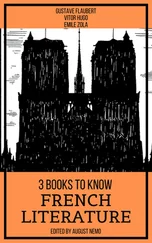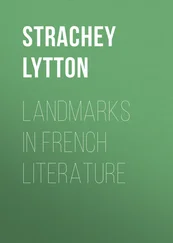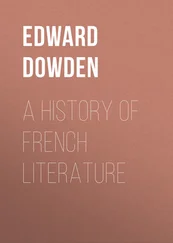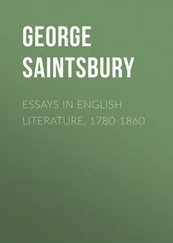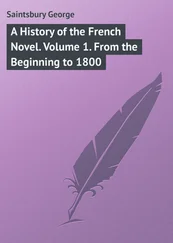George Saintsbury - A Short History of French Literature
Здесь есть возможность читать онлайн «George Saintsbury - A Short History of French Literature» — ознакомительный отрывок электронной книги совершенно бесплатно, а после прочтения отрывка купить полную версию. В некоторых случаях можно слушать аудио, скачать через торрент в формате fb2 и присутствует краткое содержание. ISBN: , Жанр: foreign_prose, на английском языке. Описание произведения, (предисловие) а так же отзывы посетителей доступны на портале библиотеки ЛибКат.
- Название:A Short History of French Literature
- Автор:
- Жанр:
- Год:неизвестен
- ISBN:http://www.gutenberg.org/ebooks/33062
- Рейтинг книги:3 / 5. Голосов: 1
-
Избранное:Добавить в избранное
- Отзывы:
-
Ваша оценка:
- 60
- 1
- 2
- 3
- 4
- 5
A Short History of French Literature: краткое содержание, описание и аннотация
Предлагаем к чтению аннотацию, описание, краткое содержание или предисловие (зависит от того, что написал сам автор книги «A Short History of French Literature»). Если вы не нашли необходимую информацию о книге — напишите в комментариях, мы постараемся отыскать её.
A Short History of French Literature — читать онлайн ознакомительный отрывок
Ниже представлен текст книги, разбитый по страницам. Система сохранения места последней прочитанной страницы, позволяет с удобством читать онлайн бесплатно книгу «A Short History of French Literature», без необходимости каждый раз заново искать на чём Вы остановились. Поставьте закладку, и сможете в любой момент перейти на страницу, на которой закончили чтение.
Интервал:
Закладка:
61
Fabliau is, of course, the Latin fabula . The genealogy of the word is fabula , fabella , fabel , fable , fablel , fableau , fabliau . All these last five forms exist.
62
It should be noticed that this title, though consecrated by usage, is a misnomer. It should be Roman de Renart , for this latter is a proper name. The class name is goupil (vulpes). The standard edition is that of Méon (4 vols., Paris, 1826) with the supplement of Chabaille, 1835. This includes not merely the Ancien Renart , but the Couronnement and Renart le Nouvel . Renart le Contrefait has never been printed. Rothe (Paris, 1845) and Wolf (Vienna, 1861) have given the best accounts of it. Recently M. Ernest Martin has given a new critical edition of the Ancien Renart (3 vols., Strasburg and Paris, 1882-1887).
63
The necessary expression of the genitive by de is later than this. Mediaeval French retained the inflection of nouns, though in a dilapidated condition. Properly speaking Renars is the nominative, Renart the general inflected case.
64
This is a free translation of the last line of the original, which is as follows: —
Pour renard qui gelines tue,
Qui a la rousse peau vestue,
Qui a grand queue et quatre piés,
N'est pas ce livre communiés;
Mais pour cellui qui a deux mains
Dont il sont en ce siècle mains,
Qui ont sous la chappe Faulx Semblant.
Wolf, Op. cit. p. 5.
The final allusion is to a personage of the Roman de la Rose .
65
Ed. Roquefort, vol. ii. See next chapter.
66
By Dr. W. Förster. Heilbronn, 1882.
67
Leipsic, 1870.
68
See note at end of chapter.
69
This miscellaneous lyric for the most part awaits collection and publication. M. G. Raynaud has given a valuable Bibliographie des Chansonniers Français des XIIIe et XIVe siècles . 2 vols., Paris, 1884. Also a collection of motets . Paris, 1881.
70
Philippe Mouskès. This is it:
La terre fut pis en cest an
Quar li vieux Quesnes estoit mors.
71
The best edition is in Schéler's Trouvères Belges . Brussels, 1876.
72
Rheims, 1851.
73
The most convenient place to look for Adam's history and work is Le Théâtre Français au Moyen Age . Par Monmerqué et Michel. Paris, 1874. There are also separate editions of him by Coussemaker, and more recently by A. Rambeau. Marburg, 1886.
74
By A. Jubinal. 2nd edition. 3 vols. Paris, 1874.
75
Ed. Roquefort. 2 vols. Paris, 1820. The first volume contains the lays; the later the fables, which have been noticed in the last chapter. Later edition, Warnke. Halle, 1885. Marie also wrote a poem on the Purgatory of St. Patrick. Three other lays, Tidorel , Gringamor , and Tiolet have been attributed to her, and are printed in Romania , vol. viii.
76
Lays of France , London, 1872.
77
This is an account of the battle of thirty Englishmen and thirty Bretons in the Edwardian wars.
78
There is, it appears, no authority for the Christian name of Robert which used to be given to Wace.
79
Wace's Brut is not the only one. The title seems to have become a common name.
80
The old edition of the Roman de Rou , by Pluquet, has been entirely superseded by that of Dr. Hugo Andresen. 2 vols. Heilbronn, 1877-1879.
81
Discovered recently in the Middlehill collection, and known chiefly by an article in Romania (Jan. 1882), giving an abstract and specimens.
82
Ed. Reiffenberg. Brussels, 1835-1845.
83
Ed. Schéler. Brussels, 1866-1868.
84
Well edited by Koch. Heilbronn, 1879.
85
See especially Hysminias and Hysmine .
86
Ed. F. Michel. 2 vols. Paris, 1864.
87
Dangier is not exactly 'danger.' To be 'en dangier de quelqu'un' is to be 'in somebody's power.' Dangier is supposed to stand for the guardian of the beloved, father, brother, husband, etc. This at least has been the usual interpretation, and seems to me to be much the more probable. M. Gaston Paris, however, and others, see in Dangier the natural coyness and resistance of the beloved object, not any external influence.
88
Chaucer's authorship of the existing translation has been denied. It is, however, certain that he did translate the poem.
89
Ed. Stehlich. Halle, 1881.
90
Ed. Förster. Berne, 1880.
91
Ed. Schéler. Brussels, v. d.
92
Ed. van Hasselt. Brussels, 1866.
93
The wooden horse.
94
The Songe d'Enfer and the Voie de Paradis , published by Jubinal, as the Roman des Eles has been by Schéler, Méraugis by Michelant, and the Vengeance de Raguidel by Hippeau.
95
Ed. Crapelet. Paris, 1834.
96
Ed. Du Méril. Paris, 1856.
97
Ed. Brunet et Montaiglon. Paris, 1856.
98
Ed. Michelant. Paris, 1867.
99
Ed. Meyer. Paris, 1875.
100
Ed. Michelant. Paris, 1876.
101
Ed. Hippeau. Paris, 1863.
102
Ed. Hippeau. Paris, 1860.
103
Ed. Förster. Halle, 1877.
104
Ed. Stengel. Tübingen, 1873.
105
Both edited in extract by Bordier. Paris, 1869. Complete edition begun by Suchier. Paris, 1884.
106
Ed. Hofmann and Muncker. Halle, 1880.
107
Ed. Michel.
108
Ed. Boca. 2 vols. Valenciennes, 1841.
109
Ed. Schéler. Brussels, 1877.
110
The following is an account of these forms, in their more important developments. The ballade consists of three stanzas, and an envoy , or final half-stanza, which is sometimes omitted. The number of the lines in each stanza is optional, but it should not usually be more than eleven or less than eight. The peculiarity of the poem is that the last line of every stanza is identical, and that the rhymes are the same throughout and repeated in the same order. The examples printed at the end of this chapter from Lescurel and Chartier will illustrate this sufficiently. There is no need to enter into the absurdity of ballades équivoquées , emperières , etc., further than to say that their main principle is the repetition of the same rhyming word, in a different sense, it may be twice or thrice at the end of the line, it may be at the end and in the middle, it may be at the end of one line and the beginning of the next. The chant royal is a kind of major ballade having five of the longest (eleven-lined) stanzas and an envoy of five lines. The rondel is a poem of thirteen lines (sometimes made into fourteen by an extra repetition), consisting of two quatrains and a five-lined stanza, the first two lines of the first quatrain being repeated as the last two of the second, and the first line of all being added once more at the end. The rondeau , a poem of thirteen, fourteen, or fifteen lines, is arranged in stanzas of five, four, and four, five, or six lines, the last line of the second and third stanzas consisting of the first words of the first line of the poem. The triolet is a sort of rondel of eight lines only, repeating the first line at the fourth, and the first and second at the seventh and eighth. Lastly, the villanelle alternates one of two refrain lines at the end of each three-lined stanza. These are the principal forms, though there are many others.
Читать дальшеИнтервал:
Закладка:
Похожие книги на «A Short History of French Literature»
Представляем Вашему вниманию похожие книги на «A Short History of French Literature» списком для выбора. Мы отобрали схожую по названию и смыслу литературу в надежде предоставить читателям больше вариантов отыскать новые, интересные, ещё непрочитанные произведения.
Обсуждение, отзывы о книге «A Short History of French Literature» и просто собственные мнения читателей. Оставьте ваши комментарии, напишите, что Вы думаете о произведении, его смысле или главных героях. Укажите что конкретно понравилось, а что нет, и почему Вы так считаете.




